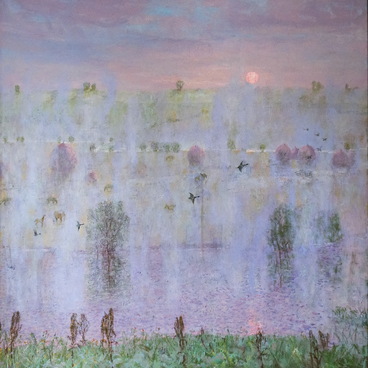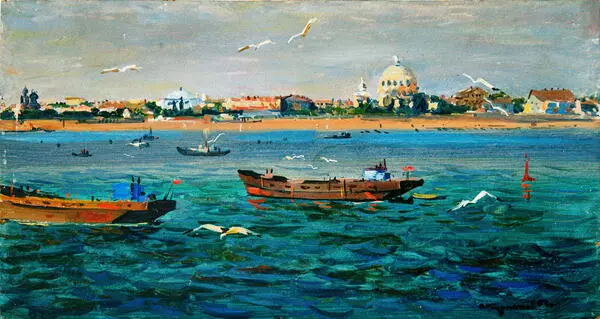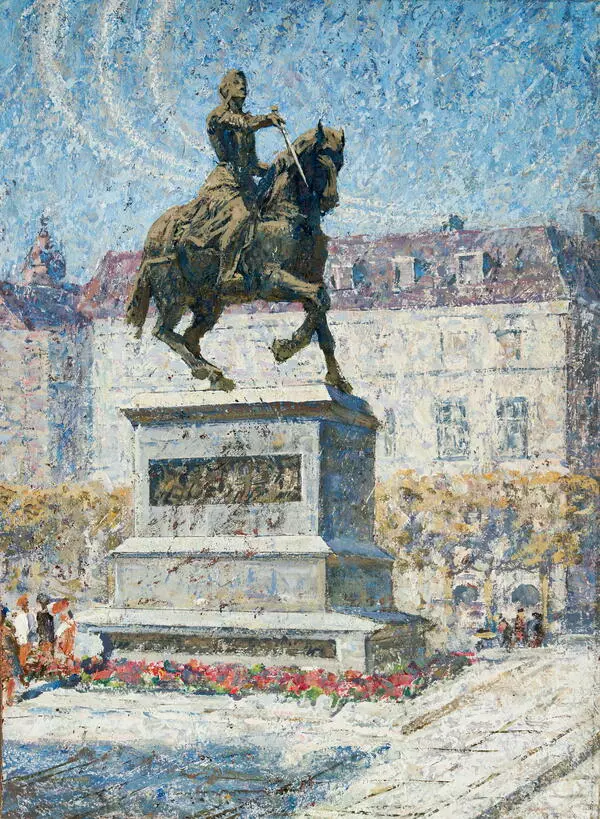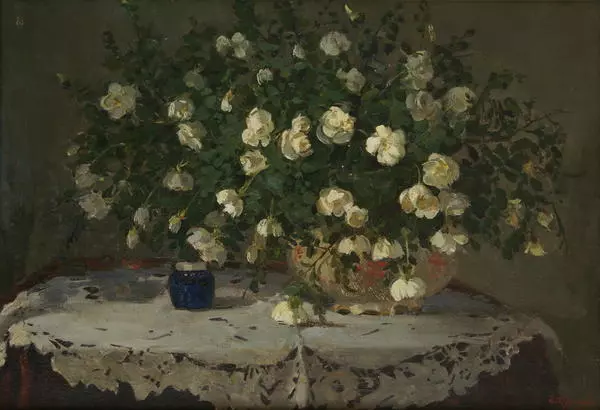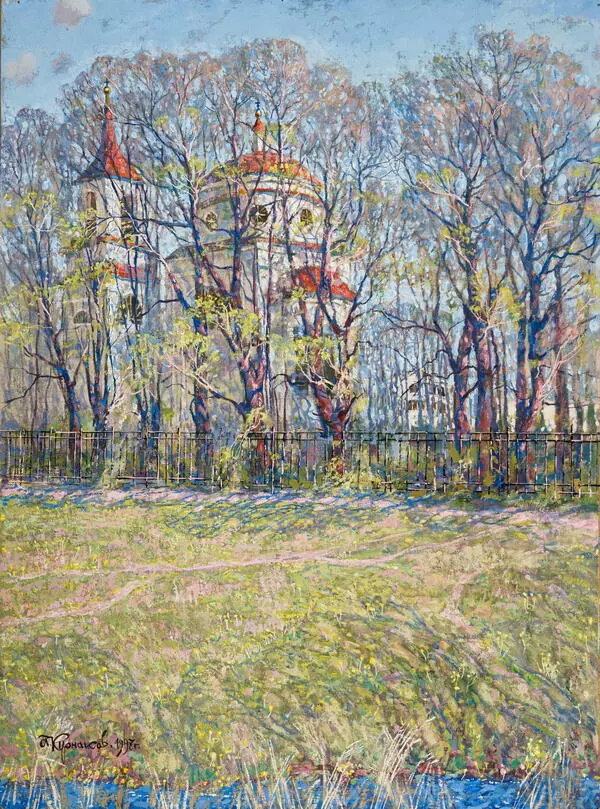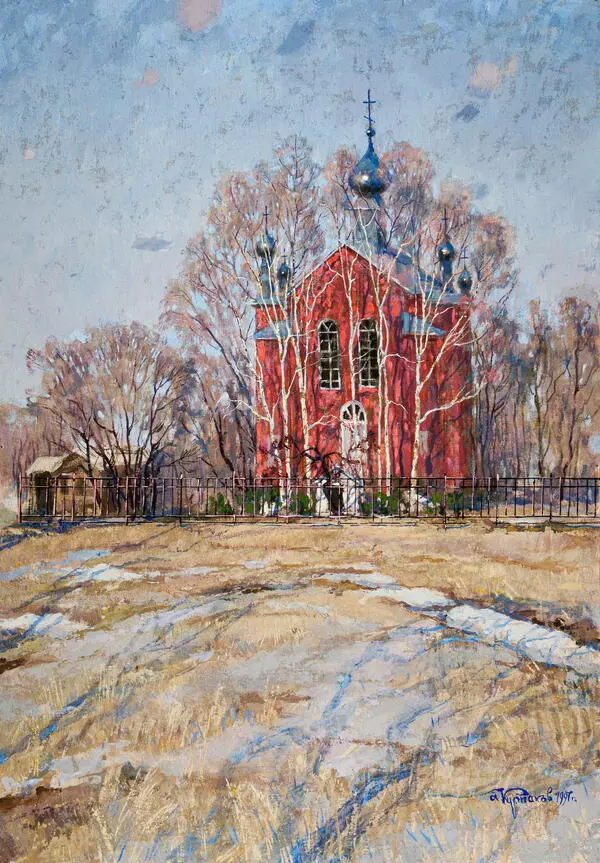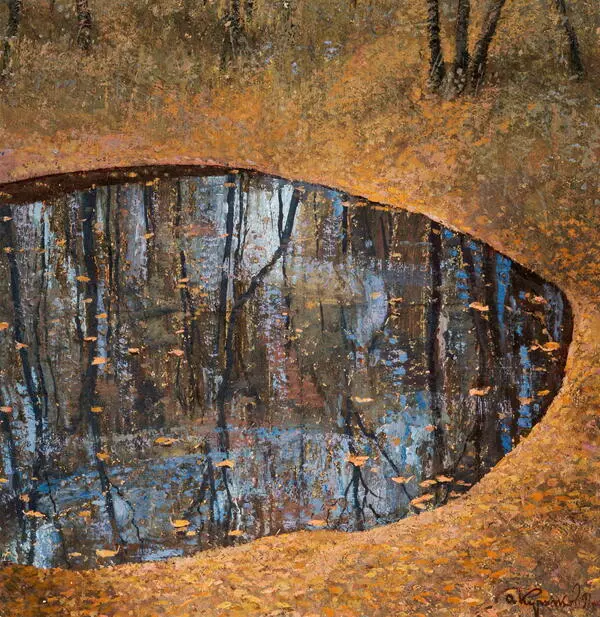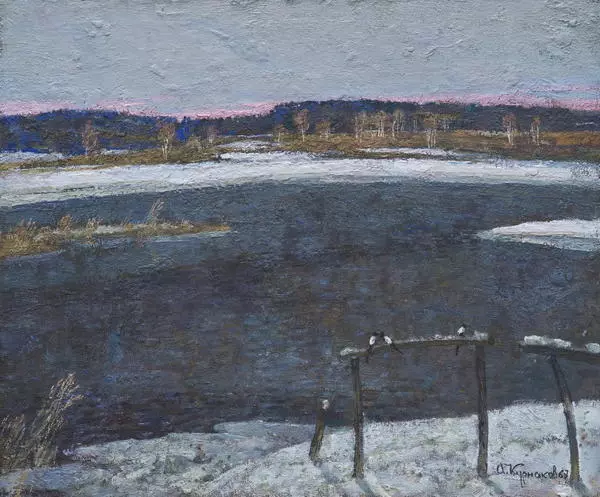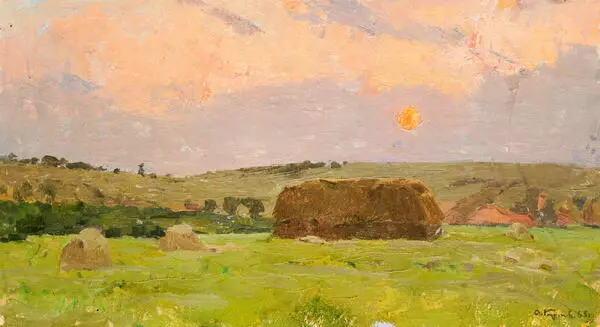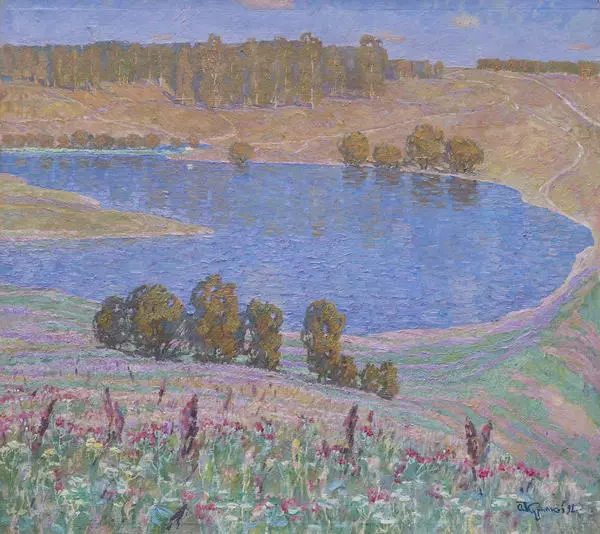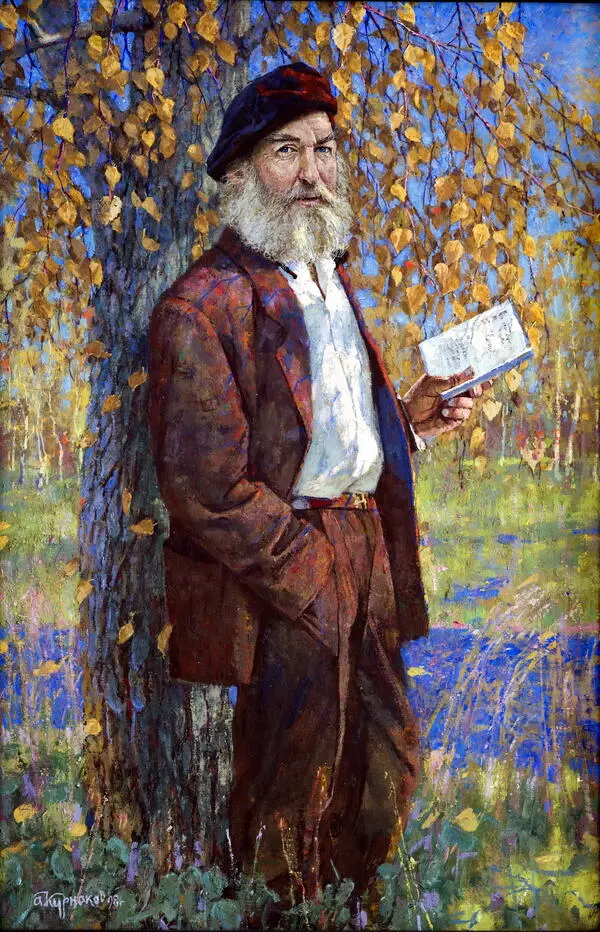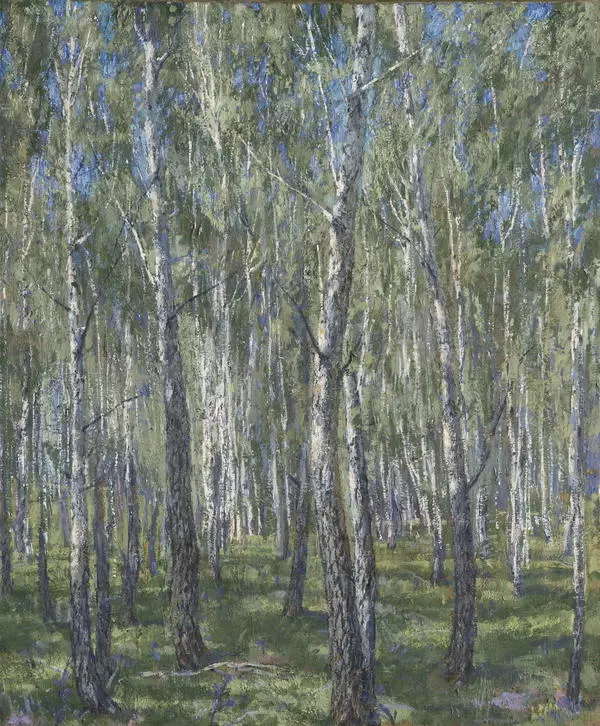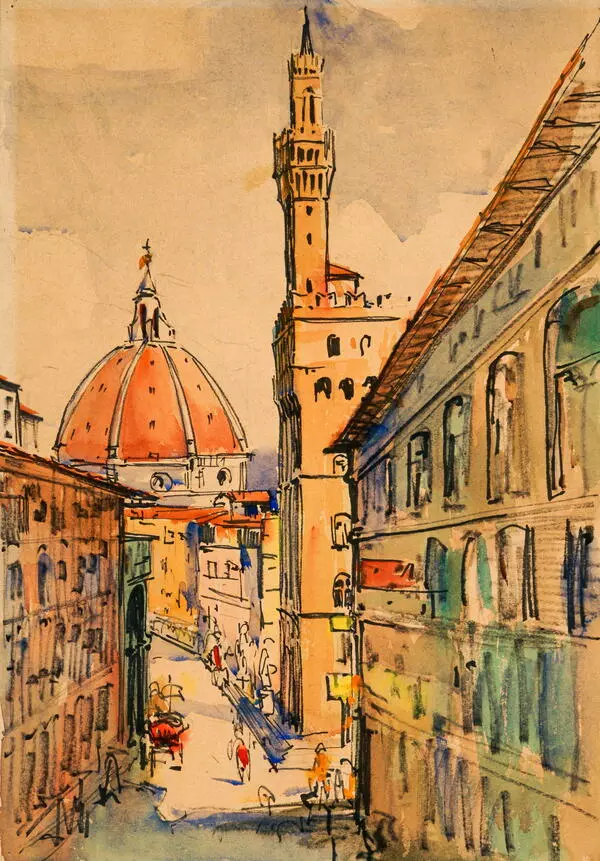In front of us is a still life of a rather complex composition depicting flowers and fruits. In the foreground, on a horizontal surface resembling a coffee table, is a heavily draped brocade-like golden tablecloth with a white pattern, in the center of which is a white dish with wavy edges and a gold border. There are five vivid oranges, three green-red apples, and one yellow on the dish. On the left, slightly in front of the dish, two vivid oranges lie on the tablecloth, separate from the others.
In ancient Greek mythology oranges were called ‘the golden apples’. This is probably why the artist placed them side by side, on the same dish. According to Roman legend, the goddess Juno gave Jupiter an orange on the day of his wedding. And the Greek myth tells that Hera received a tree with ‘golden apples’ as a wedding gift from Mother Earth Gaia. From your childhood you can recall the tale of rejuvenating apples and living water. In Ancient Russia apples were considered as symbols of youth, longevity and even immortality.
To the left and right of the dish are crystal wine glasses with a ruby-red liquid poured from a greenish bottle hiding slightly behind. There are two glass vases between the bottle and the wine glass: on the left is a supposedly crystal vase, expanding with a cone upward and ending in large points. There is a large bouquet of tall white blossoming roses and buds with numerous juicy green foliage and clearly traced thorns in it. In the foreground of the bouquet are several branches with white paniculate inflorescences.
To the right is a tall green glass vase with the same red blossoming roses and buds surrounded by foliage. There is a light lilac patterned fabric with a blue border in a background. This is a still life’s field. The fabric is thrown over a gold frame visible from both sides of the drapery.
This still life belongs to the late period of Andrei Ilyich Kurnakov’s oeuvre, when he created several works, depicting exquisite flowers, fabrics and dishes, using more exotic fruits, creating more majestic draperies.
This canvas took part in the exhibition ‘Still life in the work of Oryol artists. Painting’ in the Oryol Museum of Fine Arts.
In ancient Greek mythology oranges were called ‘the golden apples’. This is probably why the artist placed them side by side, on the same dish. According to Roman legend, the goddess Juno gave Jupiter an orange on the day of his wedding. And the Greek myth tells that Hera received a tree with ‘golden apples’ as a wedding gift from Mother Earth Gaia. From your childhood you can recall the tale of rejuvenating apples and living water. In Ancient Russia apples were considered as symbols of youth, longevity and even immortality.
To the left and right of the dish are crystal wine glasses with a ruby-red liquid poured from a greenish bottle hiding slightly behind. There are two glass vases between the bottle and the wine glass: on the left is a supposedly crystal vase, expanding with a cone upward and ending in large points. There is a large bouquet of tall white blossoming roses and buds with numerous juicy green foliage and clearly traced thorns in it. In the foreground of the bouquet are several branches with white paniculate inflorescences.
To the right is a tall green glass vase with the same red blossoming roses and buds surrounded by foliage. There is a light lilac patterned fabric with a blue border in a background. This is a still life’s field. The fabric is thrown over a gold frame visible from both sides of the drapery.
This still life belongs to the late period of Andrei Ilyich Kurnakov’s oeuvre, when he created several works, depicting exquisite flowers, fabrics and dishes, using more exotic fruits, creating more majestic draperies.
This canvas took part in the exhibition ‘Still life in the work of Oryol artists. Painting’ in the Oryol Museum of Fine Arts.


